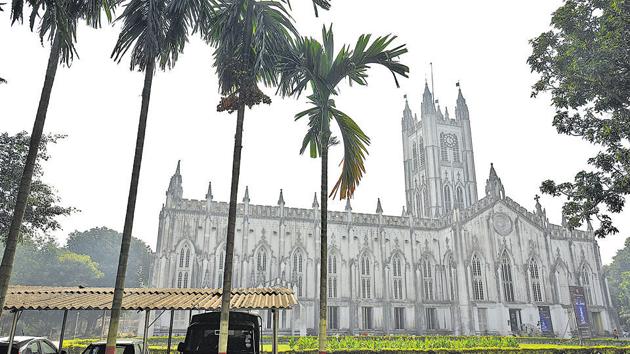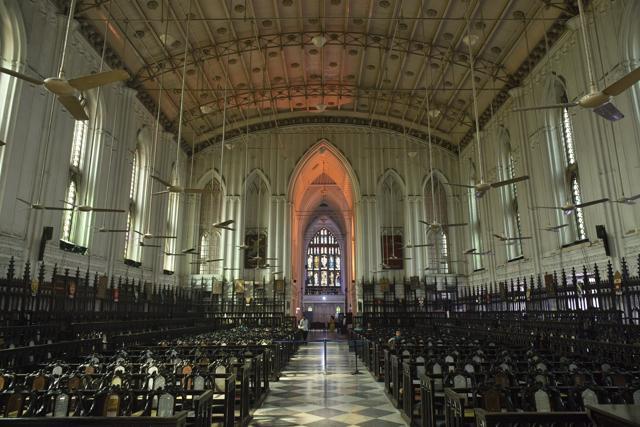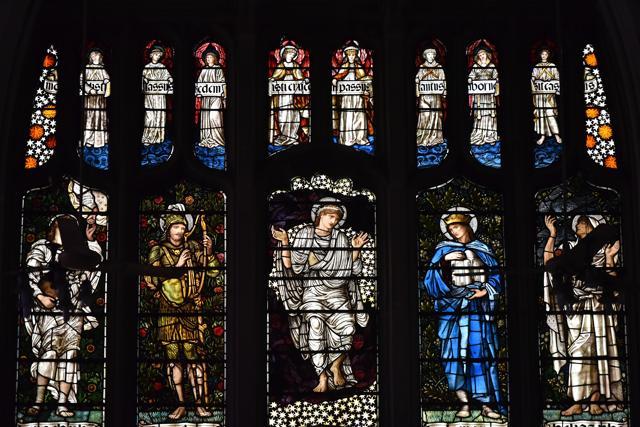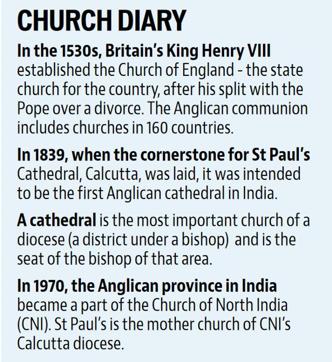Mass appeal: St Paul’s, a bishop’s dream cathedral, is now one of Kolkata’s most popular churches
If it’s Christmas in Kolkata, it must be at St Paul’s, India’s oldest Anglican cathedral, a space that blends beauty, tradition and faith. The cornerstone for St Paul’s was laid in 1839 – in 2019, it will be 180 years since work on the cathedral began.
For 93-year-old Olga Anklesaria, one of the distinct memories of St Paul’s Cathedral, Calcutta, from the early years – she has been attending the service here for six decades – is that the women always wore hats. “About 60% of the congregation was still foreigners at the time. It changed as the British started leaving and the congregation became more local,” she says.

While there is an abundance of beautiful Raj-era churches in India, when the cornerstone for St Paul’s was laid in 1839 – in 2019, it will be 180 years since work on the cathedral began – it was with the idea of building the first Anglican cathedral in India. As such, it was meant to represent the glory of the lord, as well as the grandeur of the British colonial rulers.
It was a dream close to the heart of Bishop Daniel Wilson, the fifth bishop of Calcutta, who arrived there in 1832. Like his predecessors, Wilson presided at St John’s Church, consecrated in 1787. But though St John’s served as the seat of the bishop before St Paul’s was built, and is today referred to as the old cathedral, it was never meant to be one, says Mary Ann Dasgupta, a former American citizen who came to Calcutta in 1963 and is currently putting together the history of the cathedral. For one, that church was too small.
As Bishop Wilson himself wrote in June 1839, “It has long been a subject of reproach, not only to the good taste, but to the piety of the greatest Empire in the Eastern world, that our Government House, our Mint, our Town Hall, our Custom House, our Bridges, and even our Ghats ---- to say nothing of our official residences and private dwellings ---- should be upon a scale in some measure correspondent with the position we hold in India, whilst our Cathedral [St. John’s, built in 1787] is mean, inappropriate, and incommodious.”
There were also churches in Bombay and Madras that had subsequently been designated cathedrals, but none had been built for that purpose. St Paul’s would be, in Bishop Wilson’s words, the “FIRST PROTESTANT [since the Anglican Church was created in opposition to the Roman Catholic faith in England, it is also referred to as a Protestant Church] CATHEDRAL erected to the honour of God in India.”
A Dream Comes True
On June 12, 1839, seven acres of land were handed over to Bishop Wilson for the cathedral he wanted so badly.
The East India Company, in 1840, gave a grant of ₹1.50 lakh for its construction, stipulating that the seating should be for 800 to 1,000 people. Bishop Wilson himself donated another ₹1 lakh and left a further endowment of ₹1 lakh to the church in his will. Construction began in 1839 and the cathedral was consecrated in 1847. So iconic was this cathedral in the east that in 1845, Queen Victoria presented 10 pieces of silver-gilt plate to Bishop Wilson for it.
No expense or effort was spared in ensuring the majesty of St Paul’s. The cost of the building, when it was it was completed in 1847, came to approximately ₹4,85,853.

The main structure is predominantly brick masonry, built in the English Gothic architectural style. Some of the best British and Indian talent has, over the years, helped in its beautification. The cathedral clock, for example, was made by the famous Vulliamy’s of London, and is similar to the one at Christ Church, Oxford. Behind the London-made high altar on the east wall are mosaic panels depicting the life of St Paul. In 1875, the Maharaja of Kashmir presented ₹2,000 towards the first mosaic panels. All the designs were by Sir Arthur William Bloomfield of London.
Then there are the exquisite stained-glass windows on the east and the west. The original east window was a gift from the dean and chapter of Windsor Castle, but was destroyed in a cyclone of 1864. The present window arrived, again from London, in 1868, with bars between the glass that were specially designed to weather storms and copied from those at the Oxford Cathedral. The design of the Great West Window with its central figure of Justice was chosen by Lady Mayo and executed by Messrs. Morris & Co., Bloomsbury, who employed Sir Edward Burne-Jones as their principal artist to execute it. He was an uncle of the writer Rudyard Kipling. “In February 1942, the Great West Window was dismantled and the pieces were stored in the main support pillars of the tower as a precaution against possible Japanese bombing,” says Dasgupta.

Near the cathedral entrance is a statue of Bishop Reginald Heber, the second bishop of Calcutta. Made by Sir Francis Chantrey, it is a replica of the one at St. Paul’s Cathedral, London, also by the same artist.
Pride Of Place
The cathedral enjoyed immense social prestige. “The viceroy attended service at St Paul’s,” says a member of the church. Among those who married at St Paul’s was a grand nephew of the bard Rabindranath Tagore –Gyanendramohan –who in 1852 wed the daughter of a reverend.
One of the tablets inside records that it was placed by “Lord Curzon viceroy and governor or India honorary colonel of Lumsden’s Horse [the Indian mounted infantry corps founded in Calcutta in 1899] in honour of those members of the first corps of British volunteers from India who have fought and died for the empire”.
There were three royal visits – the first, in 1875 by the Prince of Wales or King Edward VII as he became later; the second in 1911, when Queen Mary attended service here and the third in 1961, when Queen Elizabeth II and the Duke of Edinburgh attended service, after which she presented the Cathedral a silver-gilt chalice.
The cathedral doesn’t have a cemetery attached to it - only two Bishops are buried on the grounds, while Rev Wilson had his own burial vault built inside – but there are many memorial tablets inside. A panel inside the cathedral reminds visitors that this was the metropolitical and mother church of the Anglican Church of India, Pakistan, Burma and Ceylon until 1970 (Church of India, Burma and Ceylon before 1947) , when it became a part of the Church of North India (CNI). Today, it serves as the mother church of the CNI’s Calcutta diocese.

Transcending Time
But the draw of St Paul’s Cathedral goes beyond its religious significance. Declared a historic monument by the Indian government in 1975, it is one of the main tourist attractions in Kolkata. People of all faiths visit, whether drawn by its majestic beauty or to kneel in prayer. Numerous actors have shot there for films, including, as a church member mentions, Amitabh Bachchan, for his 2016 release Teen.
Time has left its dark smudge on the white exteriors. There are cracks on the walls inside. As a tablet near the entrance informs, twice, earthquakes in 1897 and 1934,damaged its spire. The present tower was erected in 1938. A tablet near the cathedral entrance informs that it was renovated and restored in 1992-94 out of the contribution of worshippers and visitors. The process for another renovation has been initiated, says Rev. Abir Adhikari, priest or presbyter-in-charge, St Paul’s. For now, the Christmas lights have been strung up and the Nativity scene laid out. The throng of visitors for the midnight service on Christmas Eve will spill out beyond the cathedral walls into the lawns. Even West Bengal chief minister Mamata Banerjee is known to attend.






